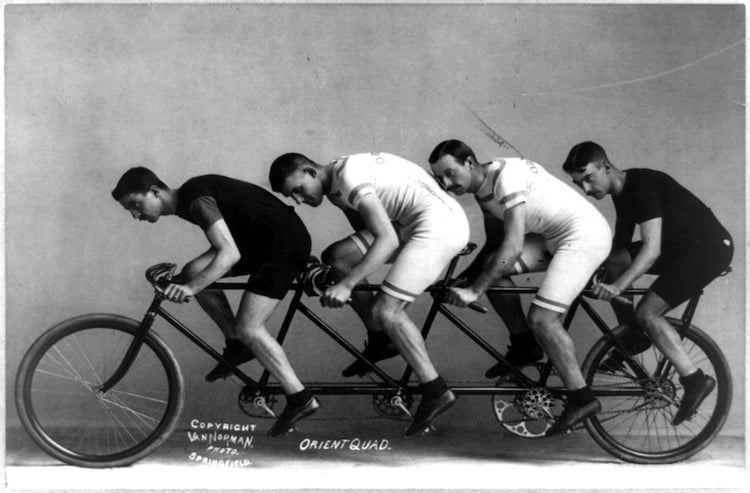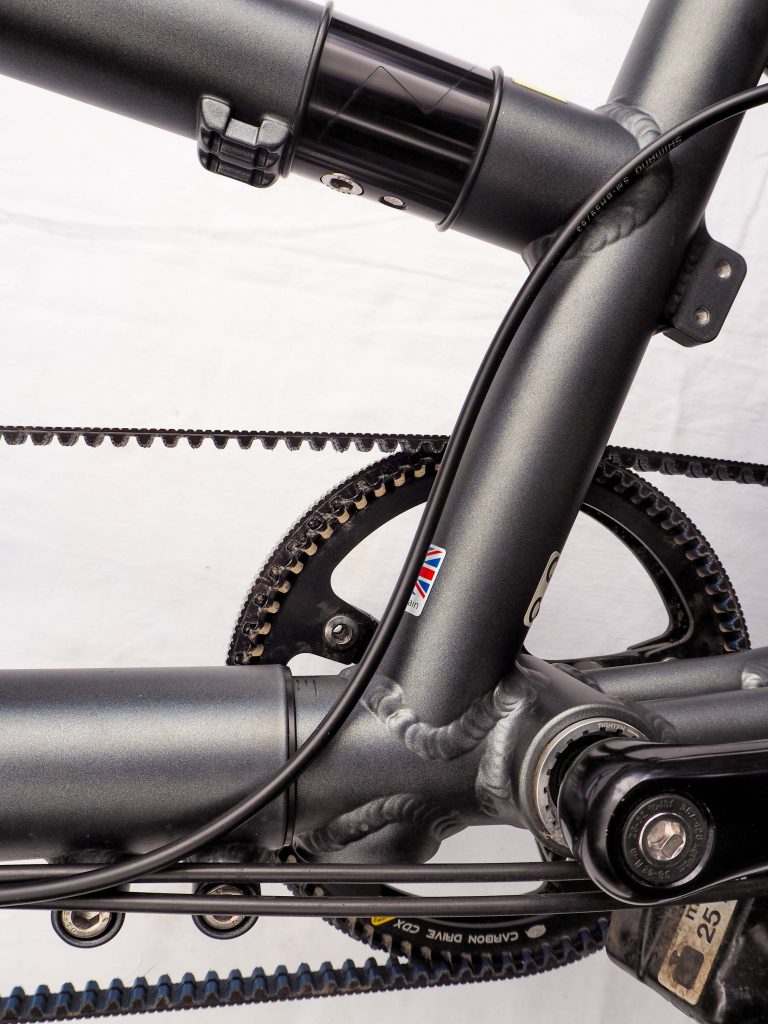Riding technique FOR tandem bikes
Tandem bikes riding for the first time has different feelings for people. Some have bicycle riding experience before, and they know how to run. Some others have no riding experience and may encounter many emotions such as fear, anxiety, stress, excitement, or other feelings. The most important thing is that the rider wants to ride in person and not because of others. In that case, the person may experience many bad feelings and hate the riding forever.
Tandem gives the person the chance to ride with another’s accompany and feel no fear or stress for the first time. Regular riding makes the person more confident enough to ride alone. Based on “Cycling about” the riding steps are as follow:

Starting a Tandem Bike
1. The front rider straddles the tandem, selects the appropriate gear (internally geared hub), moves the cranks to the preferred starting position (we like the right side), and stabilizes the bike with a wide stance holding the brakes.
Once in position, they notify the rear rider to get on with a simple ‘ok’ or ‘ready.’
2. The rear rider straddles the bike and checks for traffic or potential hazards.
3. The rear rider places their foot onto the higher pedal selected by the front rider.
4. The rear rider acknowledges that they are in position (‘ok’) and asks, ‘ready’? At this time, it can be helpful for the rear rider to ask the front rider if the gear is suitable for take-off.
5. Front rider confirms readiness (‘yep,’ ‘ok’ or ‘cool’) and does final head check.
Take-Off
6a. Front and rear riders apply pressure to their forward feet simultaneously and mount second feet. You sit down as you would when taking off on a standard bike. it can be more challenging to start the cycle for the front rider, or;
6b. Rear rider communicates readiness and puts both feet on their pedals, providing initial power to the drivetrain before the front rider mounts their second foot.
Coasting
Either rider can announce that they would like to coast. Once the announcement has been made, it is best to go to a default cruising position after a couple of pedal rotations – for us, that is right feet forward. Then, to start again, a rider has to say ‘pedaling,’ and you can get going a split second after the call has been made.
Gears

We have found that you need to change gears more regularly on a tandem than a solo. We switch gears like you would a car; when the cadence (RPM) gets to a specific spot, we move up or down a gear to something more comfortable. From the start, we go from gear 4-5-6-7-8-9 to get our speed back up.
In order to change gears, the front rider will need to announce ‘gear.’ Once the call has been made, both riders can take some pressure off the pedals for a split second while still spinning the cranks to change gears without a crunch. It is slow to start with but becomes pretty quick when you’ve got the hang of it.
Before you come to a halt, it is best to change your gear into one suitable for take-off.
Descending
Tandems are fast, so you should be careful of pedal strike with the ground when descending at speed. Therefore, we move our outer feet (from the corner’s apex) to the lower position (6 o’clock) when we descend. This better balances your weight on the bike and guarantees no chance of a pedal hitting the ground.
Stopping
The front rider communicates their intention to stop. This also means ‘we are stopping pedaling within a second, and we will go to cruising pedal position.’ Apply the brakes as usual, and once stopped, take your feet off to straddle the bike.
If you need to stop with little notice immediately, it is best not to stop spinning until a split second after the brakes are applied. This allows the rear rider to stop spinning the cranks slightly more time and will get you back to your favorite foot forward and ready to stop comfortably.
When getting off the bike, the rear rider should jump off first. The front rider must stabilize the bike well with a wide stance before the rear rider is getting off.
Climbing
There is nothing specific to know about climbing on a tandem, but it is essential to make sure that you are both happy with your cadence (pedaling speed) because a high rhythm is best.
Standing
For the more advanced riders, standing will allow you to use different muscle groups and relieve your sit bones from pressure. The riders will initially have to announce their intention to stand up. Standing smoothly requires both riders to coordinate their movement. The front rider should make sure the bars are as still as possible and the pedaling motion fluid. It is best to count down, or a simple ‘ready’… ‘go’ will do it. You can now slowly and carefully stand up!



